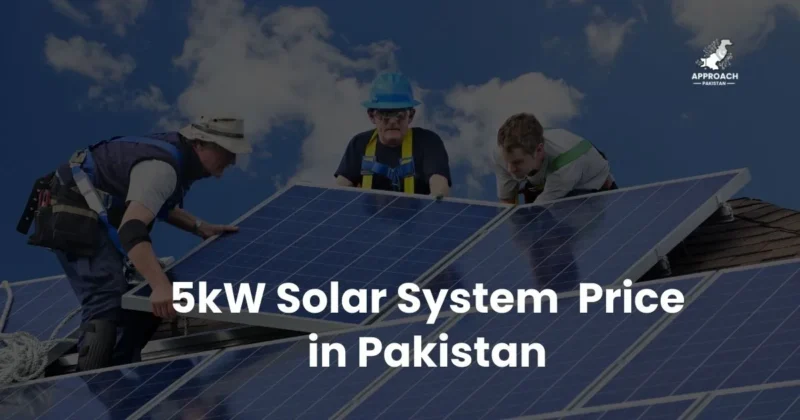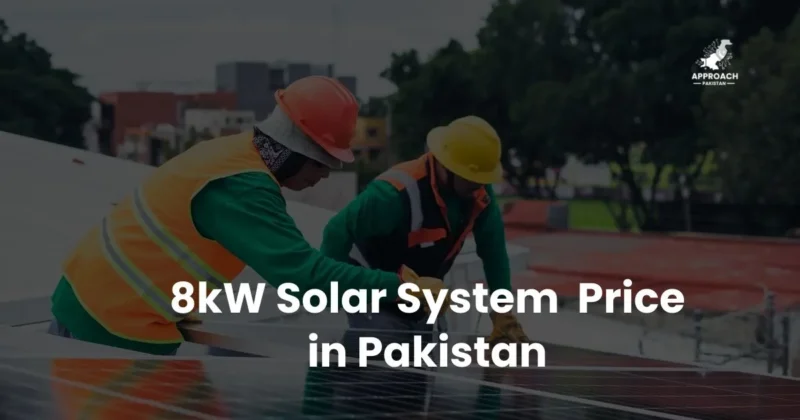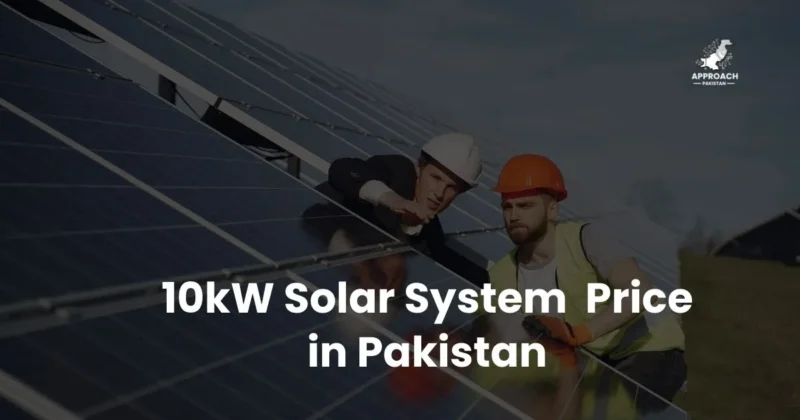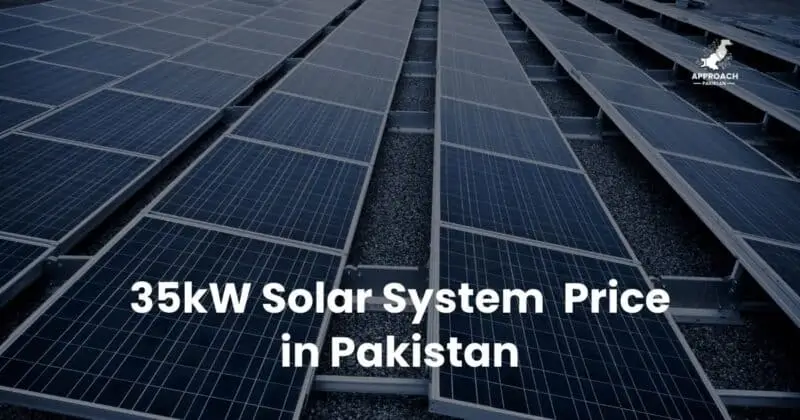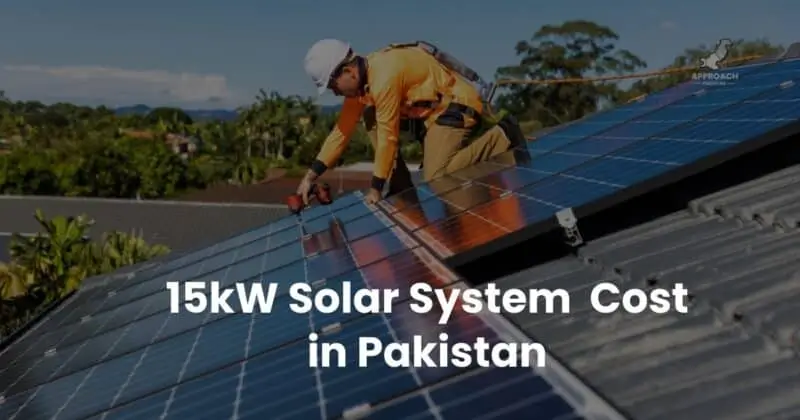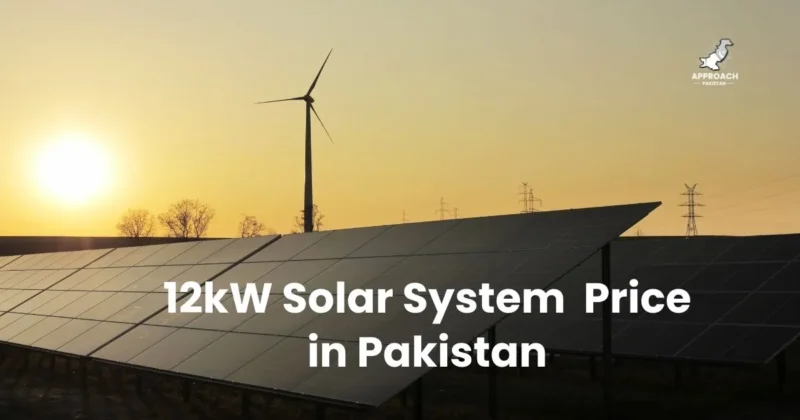25kW Solar System Price in Pakistan 2025 | Complete Guide
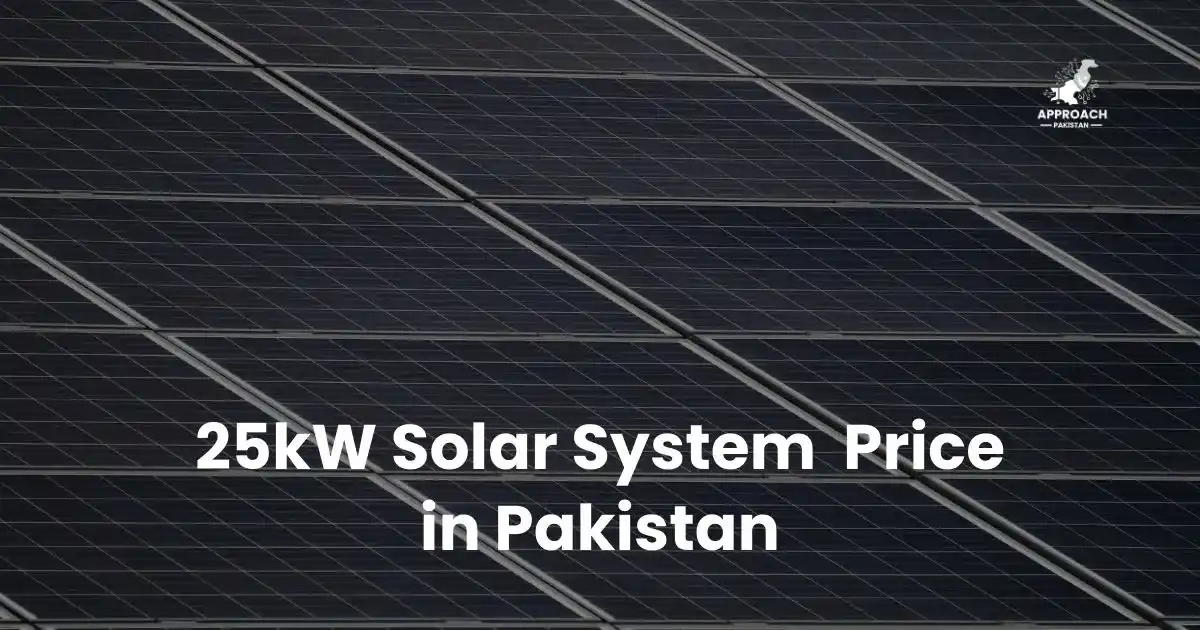
A 25kW solar system in Pakistan costs between PKR 2,500,000 to PKR 3,200,000 for on-grid systems, PKR 3,800,000 to PKR 4,500,000 for hybrid systems, and PKR 4,200,000 to PKR 5,000,000 for off-grid systems. Prices vary based on component quality, installation complexity, and location.
Your monthly electricity bill has become a monster that devours your budget. Every month, you watch helplessly as thousands of rupees disappear into WAPDA’s coffers while load shedding continues to disrupt your business operations.
You’re not alone in this struggle. Across Pakistan, businesses are bleeding money from skyrocketing electricity costs while dealing with unreliable power supply that kills productivity.
The solution sits right above your head – that unused roof space that could be generating clean, free electricity. A 25kW solar system can slash your electricity bills by 70-80% while giving you energy independence from Pakistan’s unreliable grid.
But here’s where most people get stuck. Solar pricing feels like a maze of hidden costs and confusing specifications. You need straight answers, not sales pitches.
This guide cuts through the confusion. I’ll show you exactly what a 25kW solar system costs, which components matter, and how to avoid expensive mistakes.
25kW Solar System Complete Cost Breakdown 2025
Let’s start with the numbers that matter most – what you’ll actually pay.
On-Grid Solar System Pricing
Basic Tier (PKR 2,500,000 – PKR 2,800,000)
- Local tier-2 panels (320W-380W)
- Chinese string inverter
- Basic mounting structure
- Standard installation
Premium Tier (PKR 2,800,000 – PKR 3,200,000)
- Tier-1 panels (Longi, Jinko, Canadian Solar)
- Branded inverter (Growatt, Huawei)
- Galvanized mounting structure
- Professional installation with warranty
Off-Grid Solar System Pricing
Off-grid systems cost significantly more due to battery requirements.
Entry Level (PKR 4,200,000 – PKR 4,600,000)
- 100kWh tubular battery bank
- MPPT charge controller
- Basic inverter with battery management
Professional Grade (PKR 4,600,000 – PKR 5,000,000)
- 120kWh lithium battery bank
- Advanced MPPT controller
- Hybrid inverter with smart monitoring
Hybrid Solar System Pricing
Hybrid systems offer the best of both worlds – grid connection plus backup power.
Standard Hybrid (PKR 3,800,000 – PKR 4,100,000)
- 60kWh battery backup
- Grid-tie capability
- Automatic switching system
Advanced Hybrid (PKR 4,100,000 – PKR 4,500,000)
- Remote monitoring system
- 80kWh battery backup
- Smart grid management
Which 25kW Solar System Fits Your Needs?
On-Grid Solar Systems: Maximum Savings
On-grid systems connect directly to WAPDA’s grid through net metering. You sell excess power back to the grid during peak sun hours.
How On-Grid Works: Your panels generate electricity during daylight. Excess power feeds back into the grid, spinning your meter backwards. At night, you draw power from the grid.
Perfect For:
- Businesses with high daytime electricity usage
- Areas with reliable grid connection
- Users wanting fastest payback period
Monthly Savings: PKR 180,000 – PKR 220,000 on electricity bills
To understand the complete benefits and setup process, explore our comprehensive on-grid solar system guide that covers net metering requirements and maximum savings strategies.
Off-Grid Solar Systems: Complete Independence
Off-grid systems work independently from the national grid. You generate, store, and use your own electricity.
How Off-Grid Works: Solar panels charge batteries during the day. Batteries power your loads 24/7. No connection to WAPDA means no electricity bills ever.
Perfect For:
- Remote locations without grid access
- Businesses wanting complete energy independence
- Areas with extremely unreliable grid power
Battery Requirements: 100-120kWh capacity for 25kW system
For complete energy independence solutions, discover our detailed off-grid solar system pricing and battery sizing guide.
Hybrid Solar Systems: Best of Both Worlds
Hybrid systems combine grid connection with battery backup. You get net metering benefits plus backup power during outages.
How Hybrid Works: During the day, panels power your loads and charge batteries. Excess goes to the grid. During outages, batteries automatically take over.
Perfect For:
- Businesses needing uninterrupted power
- Areas with frequent load shedding
- Users wanting backup without sacrificing grid benefits
Backup Duration: 6-8 hours of full load operation
See our complete hybrid solar system analysis to understand automatic switching technology and dual-benefit pricing.
Interactive ROI Calculator: Your Solar Investment Returns
For a 15kW system, you need 26-28 solar panels depending on individual panel wattage. Using 580W Here’s where the magic happens – calculating your actual returns.
25kW System Energy Production
Daily Generation: 90-110 kWh (varies by season) Monthly Generation: 2,700-3,300 kWh Annual Generation: 32,400-39,600 kWh
Payback Period Analysis
On-Grid System:
- Initial Investment: PKR 2,800,000
- Monthly Savings: PKR 200,000
- Payback Period: 14 months
Hybrid System:
- Initial Investment: PKR 4,000,000
- Monthly Savings: PKR 180,000
- Payback Period: 22 months
25-Year Financial Projection
Total Electricity Cost Without Solar: PKR 60,000,000 Total Solar System Cost: PKR 2,800,000 Net Savings Over 25 Years: PKR 57,200,000
Component Selection Guide: What Makes a Quality System
Solar Panel Comparison
Monocrystalline vs Polycrystalline:
Monocrystalline panels dominate the Pakistani market for good reason. They’re 18-22% efficient compared to polycrystalline’s 15-17%.
Tier-1 Panel Brands:
- Longi Solar: Most popular in Pakistan, 25-year warranty
- Jinko Solar: Best price-performance ratio
- Canadian Solar: Premium choice for commercial installations
- JA Solar: Growing market presence, competitive pricing
Panel Specifications for 25kW:
- Quantity: 42-45 panels (590W each)
- Total Wattage: 25,000W
- Roof Area Required: 1,200-1,400 sq ft
Inverter Selection Guide
Your inverter is the system’s brain. Choose wisely.
String Inverter vs Power Optimizers:
String inverters work well for unshaded roofs. Power optimizers handle partial shading better but cost 15-20% more.
Top Inverter Brands:
- Growatt: Best warranty support in Pakistan
- Huawei: Advanced monitoring features
- Sungrow: Commercial-grade reliability
- Solis: Budget-friendly with good performance
25kW Inverter Specifications:
- Input voltage range: 200-1000V DC
- Output frequency: 50Hz
- Efficiency: 97.5%+
- Protection: IP65 rating
Mounting Structure Requirements
Pakistan’s weather demands robust mounting systems.
Galvanized Steel vs Aluminum: Galvanized steel costs 30% less but requires more maintenance. Aluminum lasts longer in coastal areas.
Wind Load Calculations: Pakistani building codes require 150 km/h wind resistance. Quality mounting systems exceed this requirement.
Industry-Specific Solutions
Manufacturing & Factory Solar Solutions
Factories consume massive electricity during peak hours – exactly when solar generates maximum power.
Textile Mill Applications: A 25kW system covers 40-50% of a small textile unit’s daytime power needs. ROI improves to 12-15 months due to high consumption.
Key Benefits:
- Reduce peak demand charges
- Stabilize production costs
- Improve export competitiveness
Hospital & Healthcare Solar Systems
Hospitals need uninterrupted power. Hybrid systems provide grid savings plus critical backup.
Critical Load Coverage:
- ICU equipment: 8-10 kW
- Emergency lighting: 5-8 kW
- Vaccine storage: 3-5 kW
- OT equipment: 10-15 kW
A 25kW hybrid system covers essential loads during emergencies while reducing daytime grid dependency.
Cold Storage & Warehouse Solutions
Cold storage facilities consume electricity 24/7. Solar reduces daytime costs while batteries maintain cooling during outages.
System Design Considerations:
- Backup power prevents inventory loss
- High thermal mass reduces battery requirements
- Cooling loads peak during afternoon sun hours
City-Specific Installation Considerations
Lahore & Punjab Region
Punjab receives 5.5-6.5 peak sun hours daily. Grid stability varies by area.
Local Considerations:
- Dust cleaning required monthly
- Grid voltage fluctuations in industrial areas
- Net metering approval takes 45-60 days
Recommended System: On-grid for most areas, hybrid for industrial zones
Karachi & Sindh Province
Coastal conditions affect component selection.
Environmental Factors:
- Salt air requires anti-corrosion coating
- High humidity affects electrical connections
- Monsoon season reduces generation 15-20%
Component Upgrades Needed:
- Marine-grade wiring
- IP66-rated inverters
- Corrosion-resistant mounting
For city-specific installation requirements and dealer networks, explore our complete provincial solar installation guide.
Peshawar & KPK Region
Mountain regions offer excellent solar potential but face unique challenges.
Regional Benefits:
- Higher altitude improves panel efficiency
- Cooler temperatures boost performance
- Lower dust accumulation
Installation Challenges:
- Component transportation costs
- Limited grid infrastructure in rural areas
- Skilled installer shortage
Financing Options & Government Incentives for 25kW System
Bank Financing Programs
HBL Solar Financing:
- Up to PKR 5,000,000 loan amount
- 3-year repayment period
- 15-18% markup rate
UBL Green Energy Loans:
- Covers 80% of system cost
- 5-year repayment option
- Collateral-free up to PKR 2,000,000
State Bank of Pakistan Refinance Scheme
SBP offers refinancing to banks at 3% for renewable energy projects. Banks pass on reduced rates to customers.
Qualifying Criteria:
- Minimum 5kW system size
- Tier-1 component requirement
- Professional installation mandatory
Provincial Incentives
Punjab Solar Program:
- 25% subsidy on residential systems
- Fast-track net metering approval
- Property tax exemption
Sindh Renewable Energy Policy:
- Import duty exemption on components
- Grid connection fee waiver
- Accelerated depreciation benefits
25kW Solar System Installation Process & Timeline
Pre-Installation Phase (Week 1-2)
Site Survey: Engineers assess roof condition, electrical panel capacity, and shading analysis.
System Design: Custom layout based on your consumption patterns and roof geometry.
Permit Applications:
- Building permit from local authority
- Net metering application to DISCO
- Electrical safety inspection scheduling
Installation Phase (Week 3)
Day 1-2: Structural Work
- Mounting structure installation
- Roof penetration sealing
- Cable routing preparation
Day 3-4: Electrical Work
- Panel installation and wiring
- Inverter mounting and connection
- AC-DC disconnects installation
Day 5: Testing & Commissioning
- System performance testing
- Safety inspection completion
- Net meter installation coordination
Post-Installation (Week 4-6)
Documentation:
- System performance certificates
- Warranty documentation
- Insurance claim filing
Monitoring Setup:
- App installation and training
- Performance baseline establishment
- Maintenance schedule planning
Maintenance & Performance Optimization of 12kW System
Monthly Maintenance Tasks
Panel Cleaning: Dust reduces efficiency by 15-25% in Pakistani conditions. Monthly cleaning maintains optimal performance.
Visual Inspection:
- Check for loose connections
- Inspect mounting hardware
- Monitor inverter display
Performance Monitoring: Track daily generation through mobile apps. Sudden drops indicate issues requiring attention.
Annual Professional Maintenance
Electrical Testing:
- DC voltage measurements
- Insulation resistance testing
- Grounding system verification
Mechanical Inspection:
- Mounting structure tightness
- Panel frame integrity
- Weather seal condition
Performance Analysis: Compare actual vs expected generation. Identify underperforming panels or system inefficiencies.
Common Issues & Solutions
Reduced Generation: Usually caused by shading, dust, or component failure. Regular monitoring catches issues early.
Inverter Faults: Display error codes indicate specific problems. Most issues resolve with simple resets.
Grid Connection Problems: Voltage fluctuations or grid instability can trip inverter protections. Stabilizers help in problematic areas.
Quality Assurance & Warranty Coverage
Component Warranties
Solar Panels:
- Performance: 25 years (80% output guarantee)
- Product: 10-12 years manufacturing defects
- Local support through authorized dealers
Inverters:
- Standard: 5-10 years full replacement
- Extended: Available up to 20 years
- On-site repair service in major cities
Installation Warranty:
- Workmanship: 2-5 years
- Mounting structure: 10 years
- Electrical work: 1-2 years
Quality Certifications
International Standards:
- IEC 61215 (Panel reliability)
- IEC 61730 (Safety qualification)
- UL 1741 (Inverter standards)
Pakistani Requirements:
- PSQCA approval for local sales
- NEPRA certification for grid connection
- Building code compliance
Performance Guarantees
Generation Estimates: Reputable installers guarantee 90% of projected generation. Shortfalls trigger warranty claims.
System Monitoring: Real-time monitoring identifies issues before they impact performance. Many companies offer remote diagnostics.
Government Incentives and Tax Benefits
Pakistan’s net metering policy allows selling excess power back to the grid at purchase rates. Government provides import duty exemptions on solar equipment and depreciation benefits for commercial installations. Some provinces offer additional subsidies.
Available incentives:
- Net metering at retail rates
- Import duty exemptions
- Accelerated depreciation for businesses
- Provincial subsidies (varies by location)
Net metering applications take 2-4 weeks for approval. Documentation includes system design, safety certificates, and property ownership proof.
For complete guidance on maximizing government incentives and understanding policy updates, see our government net metering process guide that covers application procedures and regulatory requirements.
Regional Price Variations of 15kW Solar Installations
15kW system prices vary by PKR 100,000-200,000 across Pakistan due to transportation costs, local installation rates, and regional incentives. Karachi and Lahore have competitive pricing, while remote areas face 10-15% higher costs.
Regional pricing:
- Lahore: PKR 1,450,000-1,550,000
- Karachi: PKR 1,480,000-1,580,000
- Islamabad: PKR 1,500,000-1,600,000
- Peshawar: PKR 1,550,000-1,650,000
- Remote areas: PKR 1,600,000-1,750,000
Transportation adds PKR 50,000-100,000 for distant locations. Local installation rates vary based on technician availability and market competition.

